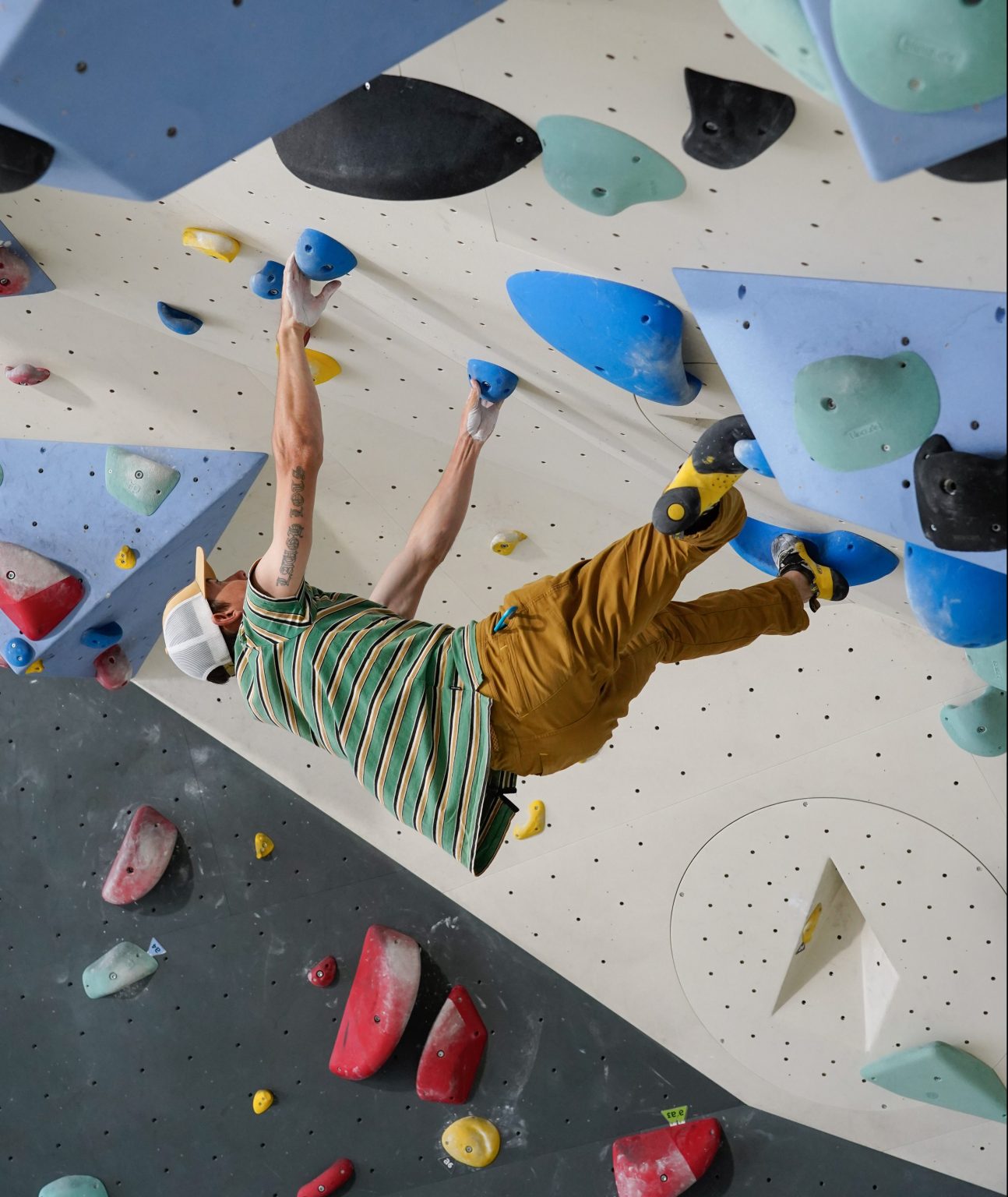How Indoor Bouldering Works

Alpine Indoor Climbing is a fully air-conditioned bouldering gym located in Robina, Queensland. Our facility uses world-renowned Blocz walls and state-of-the-art climbing holds to provide quality climbs at all difficulties – from entry level to expert. More than just a gym, Alpine IC is a community of climbers eager to support one another as they learn and grow. The gym is open to anyone (10 years and over), and our friendly team is more than happy to walk you through how to get started with indoor bouldering. After your safety induction, you will be able to try plenty of problems around the gym and use our dedicated training area. But before you get started on your bouldering journey, let’s have a look at how the sport works.
Where it all began.
In the late 19th century bouldering found its roots in the most unlikely of places – a forest 50km south of Paris, France. This paradise of endless sandstone boulders was called Fontainebleau, and it was used by the alpinists of the time to train for big mountain ascents. These Bleausards (or Boulderers) began testing themselves on harder and harder boulders, and from this, a new sub-culture of climbing was born – bouldering. Since its start, bouldering has spread across the world from Yosemite National Park, to Rocklands, South Africa, to the emergence of modern indoor bouldering gyms.
These indoor gyms marked a new page for the sport, as the possibilities for setting routes and training were limitless. Not restricted by weather conditions or equipment, climbers could now train indoors and set more creative problems to challenge themselves. As a result of these new indoor facilities harder grades were established outdoors and modern climbing techniques took shape. These days, indoor climbing gyms are an excellent place to introduce yourself to the sport, build strength and learn new techniques.
What is a ‘Boulder Problem”.
In its most simple state a boulder a problem is the path that a climber takes in order to complete a climb. Indoors these are usually no taller than 4.5 meters in height and consist of a set of colored foot and hand holds above soft, squishy mats. Every ‘problem’ has a graded difficulty (we’ll get back to this) and a climber must use a specific color/combination of hand and foot holds, along with volumes (large wooden shapes to change the wall angles), to complete it.
How to Climb an Indoor Boulder Problem.
To start a boulder problem, use the holds that have been tagged with the climbs grade, marked “A1” to “A7”. Grabbing the starting holds, or hold, with both hands you can now pull onto the wall and begin climbing. As you’re climbing you can only use holds that are the same color as your starting holds for both your hands and feet. Once at the top of the climb locate the hold with a “TOP” tag, hold this with both hands in a controlled manner to send (or complete) the problem. You can either down climb from here using our big-grey down climbing holds or jump down on to the mats safely.

How our grading/difficulty works.
At Alpine IC we have developed our own indoor grading system to measure the difficulty of our set boulder problems. The grading system begins with A1 (easiest) and extends all the way to A7 (hardest), giving you options for climbs regardless of your skill level. These grades are calculated by our route setters who consider the risk, intensity and complexity of a specific boulder problem. We have a comprehensive database that can help you progress through every movement skill required to advance from A1 to expert levels.
How our weekly route setting works.
To ensure there are always new climbs to try we strive to have fresh problems available for our community weekly. Our setting team resets a sector of wall every week with climbs for all abilities and skill levels. During setting times the gym is closed, allowing our team of setters to focus on constructing interesting, challenging and aesthetic problems for your next session. Our setting days are Thursday and Friday, meaning we open at 12pm on both of these days. Check out our opening hours here.

What is the MoonBoard?
Alpine IC is proud to have the Gold Coast’s first and only MoonBoard. The MoonBoard is a “standardized interactive training wall that connects a global community of climbers through shared problems and competitive performance rankings”. The board is set at 40-degrees and has a grid of the latest set of varied holds, making it perfect for more advanced climbers looking to build finger strength, power and body tension. Simply connect your phone (or our iPad) with the MoonBoard App, select from tens-of-thousands of problems that you want to climb and watch the LEDs light up with the holds you can use. With the MoonBoard you can climb what the sports elite climb, and test yourself on problems from all around the globe!
Note: The MoonBoard uses the Hueco or V-scale grading system and begins at V3.
Alpine IC is here for your progression from your very first session, to training and growing as a climber. Whether you’re after a social coffee or a challenging climbing session, our facility and passionate team are here to help. What started a fringe activity in the forests of Fontainebleau has now flourished into a global sport, with a strong and encouraging community. So be sure to approach our team with any questions you may have about climbing and training.